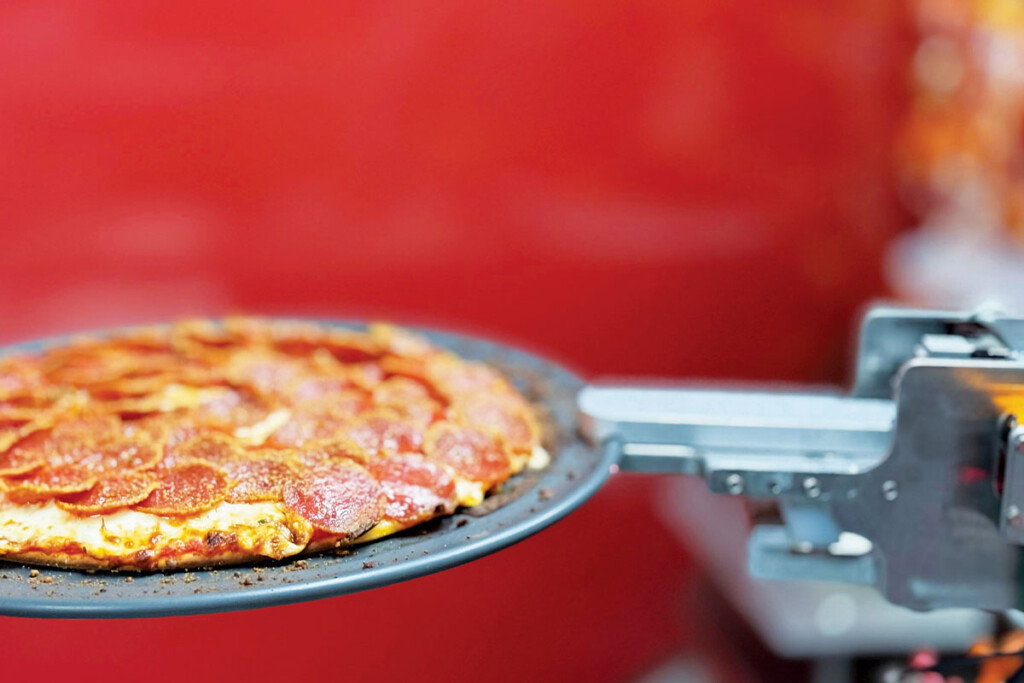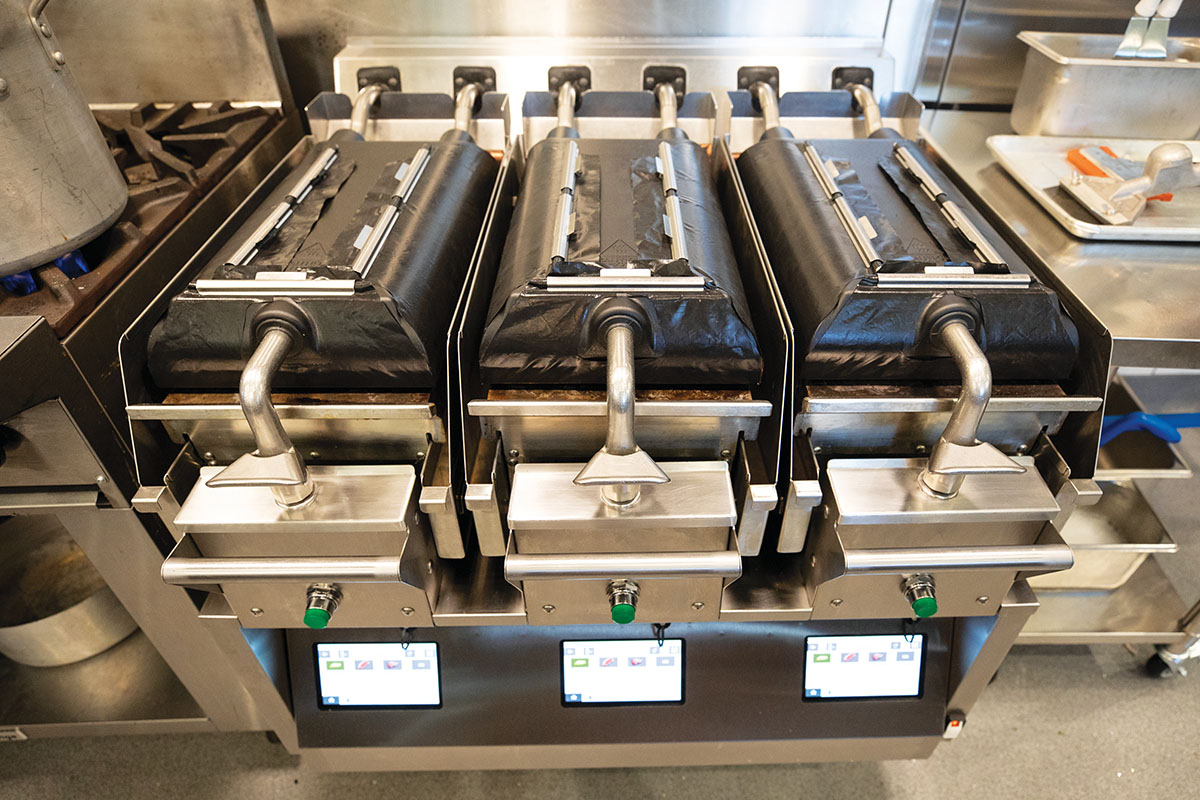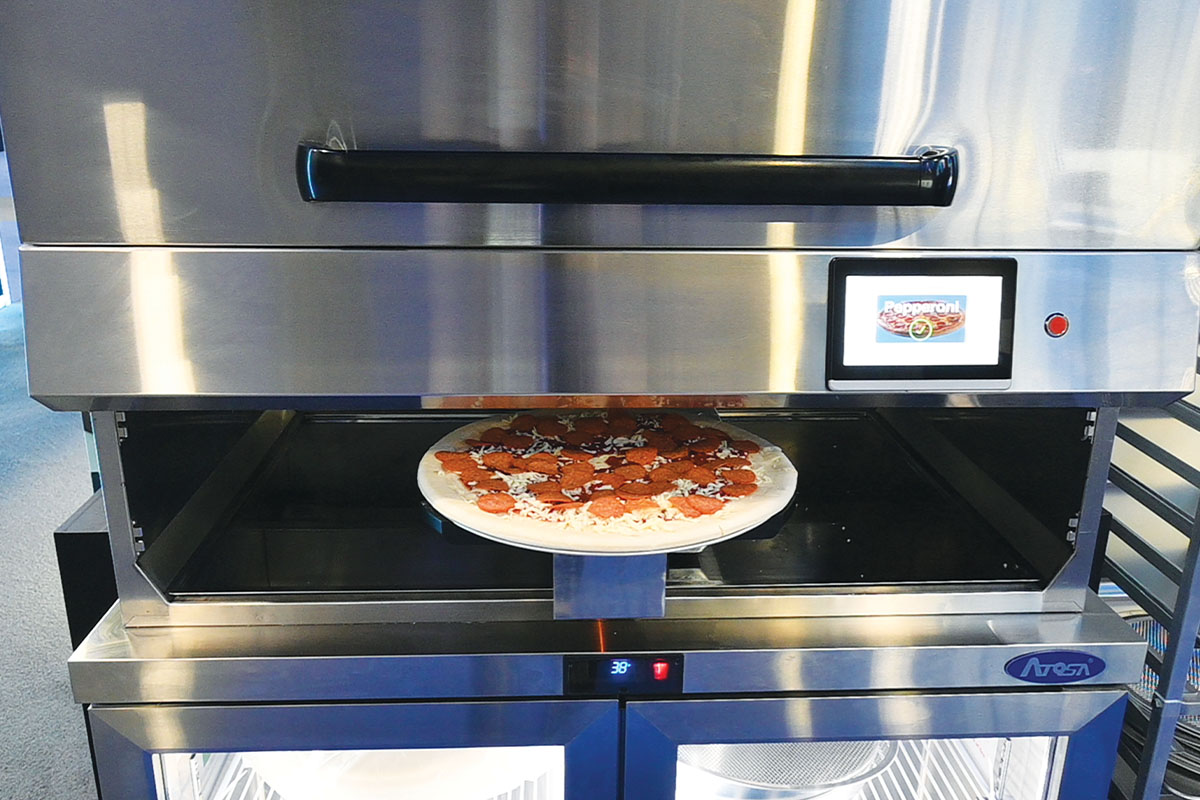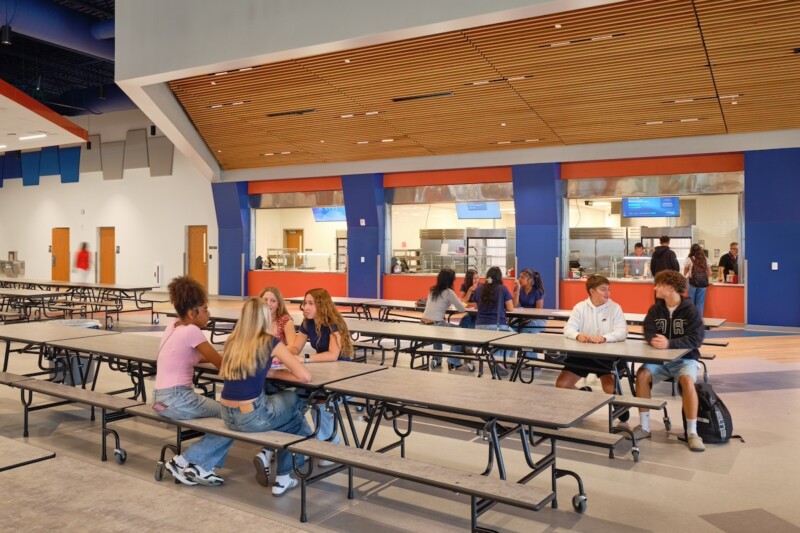Ready, Set, Automate: Mapping Your Kitchen Automation Journey
Take in advice from Chipotle, Donatos Pizza, consultants Rob Seely and Dick Eisenbarth, plus robotics manufacturers.

From robotic salad assemblers to auto-breaders and batterers, it’s easy to be dazzled by shiny new technology hitting the market.
“(Operators) see these cool things and they don’t know where to start,” says Rob Seely, associate vice president of operations strategy and design at WD Partners. “They want to make sure they’re not missing out and behind the curve.” When it comes to introducing robotics and other automated back-of-house equipment, industry experts encourage a measured approach. We looked to foodservice consultants, manufacturers and operators who have been there for advice on where to start.
What’s Trending
Many of today’s automated solutions aim to unlock better multitasking for back-of-house staff. “Anything that has to do with maximizing labor, that seems to be where you’re getting the most bang for your buck and where the most innovation is coming from,” says Dick Eisenbarth, president emeritus at Cini-Little and a judge for the National Restaurant Association’s Kitchen Innovations Awards. “For example, there was a product out at the NRA Show this last year that was an import from Korea and it wasn’t ready for prime time yet, but you put a steak on there and it monitors the temperature and the degree of doneness, and the chef can go on and do something else and come back to it.”
Other launches aim to improve product quality. “I’ve seen an egg cooker that would drop the egg in, crack the egg, cook the egg sunny side and then pop it in a pan below,” Eisenbarth says. “It’s really designed so you could expand a daypart in your menu, if you wanted to add a breakfast sandwich. Instead of that perfectly round premade puck of egg, well, this is a fresh egg.”
Find Your Pain Points
Instead of shopping new equipment to see what might fit your operation, experts recommend the opposite: Start in your own kitchen instead. One manufacturer suggests identifying pain points as the first step. “Pinpoint where they are experiencing labor shortages, food waste or inconsistencies, or any type of bottlenecks,” they say. “Those are the prime areas where they would want to implement automation.”
A back-of-house position that’s always turning over also could be a pain point eased by implementing automation. To that end, some makers are focused on monotonous tasks, like working the fryer, notes Seely.
A desire to improve consistency led Chipotle Mexican Grill to test and roll out several automated solutions, including a dual-sided plancha grill. “On our path to 7,000 restaurants, one of the ways we are going to be able to get there is to truly be able to identify and eliminate friction points for our team members so we can create consistency as we scale,” says Haris Khan, Chipotle’s vice president of operations services. “One of the most complex positions is our grill. You have the flat top plancha that Chipotle has had since the beginning of time and a team member constantly grilling chicken and steak,” Khan says. With the dual-sided plancha, a team member places the protein, seasons it and pushes a specific protein icon on the digital display. Next, the upper platen automatically presses the protein at the desired height and when the cook cycle is complete, the platen rises automatically so the employee can remove the protein. Because this automation reduces the need to flip proteins, it also reduces cook time and increases grill capacity, Khan says.

At Chipotle Mexican Grill, a dual-sided plancha saves labor and ensures consistency.
Meet Your Maker
Next, dig into the details. “Document your kitchen workflow to see how and where automation can be inserted without disrupting your overall process,” one manufacturer says.
With your workflow down on paper, you’re poised to kick off a conversation with a manufacturer to zero in on potential automated solutions. “Get with your manufacturer rep or call the factory directly and say, ‘Hey, I’ve got this issue. Can you help me?’” Eisenbarth says. If you’re not currently connected with a representative for your existing equipment, he suggests using trade publications or just a simple internet search for automated kitchen equipment and making a cold call to start the conversation. “Most manufacturers will offer to let you test the equipment in either the representative’s or manufacturer’s test kitchen. Or better yet, work with a good foodservice facility designer to find the best solutions to consider,” he says.
When the team at fast-casual Donatos Pizza couldn’t find an automated solution to ease the task of saucing a pizza, they partnered with a manufacturer to create one. Collin Sanders, Donatos’ executive director of nontraditional franchise relationships, says, “We are known for edge-to-edge toppings, so that involves using a spoodle and getting sauce all the way out to the edges, which is a time-consuming training process and very repetitive.” They found a manufacturer to design a saucing machine that met their specifications. “You place the dough on a platform and the sauce is portion-controlled and spread perfectly and boom, it’s done,” Sanders says. “Now all of a sudden you removed all of that training from the manager’s world and made life easier.”
If improving speed of service is your top goal, finding an automated tool that simply does the job well is not enough, Seely says; it also must do it faster and keep up with needed volumes.
Focus on Return
Once you’ve identified a potential automated solution, consider the ROI. “Long ago, if we had a payback in five years, we thought, ‘Oh, OK, that’s good,’ especially for institutional-type clients that are going to be around for a long time,” Eisenbarth says. “Now, QSRs want the payback in months or a year or two. So that’s one of the things I always look at: How is the equipment/technology going to justify itself? You’re paying for the technology, so I have to have a return on that investment, either in reduced labor, faster service or better food quality.”
When considering ROI, don’t overlook long-term expenses, as some companies have monthly or annual fees tied to their automation products.
In the end, there are still situations where automation seems like a good idea in theory, but it doesn’t make sense financially. “You can pretty much automate anything; it’s a matter of the complexity of it,” says one maker. “For example, we were working with a major c-store chain on a (product that could restock) their vault—all the stuff behind their glass doors—and we were able to come up with a reasonable solution for the automation to restock, but to have the automation unpackage everything—let’s say a 12-pack of Coke—it took it to a more complex level and the ROI wasn’t there.”
Scrap the All-or-Nothing Mindset
When it comes to completing tasks manually versus using automation and robotics in the kitchen, the approach needn’t be all or nothing. In fact, having the flexibility to operate equipment in either an automated or manual mode can be useful. “We make a bowl and salad station that when automated, can take up to 28 toppings and put them in a bowl in 25 seconds,” says one manufacturer. “(But staff) can also manually make those bowls.”
Having the flexibility to operate equipment in either an automated or manual mode can be useful.
You also can employ robotics in some locations but not others. Seely points to Sweetgreen as one such example. In 2023, Sweetgreen started rolling out automated salad-making at some new locations, while others continue to open with the traditional service model. “We work with brands and they’ll say, ‘Well gosh, that seems very difficult having two different operating systems,’ and we say, ‘Yes, but we can look at the data and do some analysis and determine if that makes sense,’” Seely says. “With Sweetgreen it did, and so far it’s working.”
Expect to Iterate
Operators who have been there admit you may not get it right the first time. Chipotle tested automated produce slicers to more consistently dice onions, bell peppers and jalapenos after those veggies are box-cut by staff. While staff loved it, product quality suffered. “It was causing our ingredients to purge too much juice when it cut across the onions, and it was mushing the jalapenos,” Khan says. “When we started visiting restaurants, I heard: ‘This is fantastic, it saves us time, but we are noticing when we are doing tastings as a team that the flavor is off.’” Instead of rushing to market, they paused the program and went back to the drawing board.
Looking ahead, Seely says he expects to see more partnerships and collaboration between traditional equipment makers and robotic innovators. “We are getting past the point of, ‘Ooh and ahh, isn’t that thing cool?’” he says. “For this to carry forward, we have to think more granularly about the cases where automation really makes sense (for your operation).

Pizza robots, fryer robots, automated makelines and egg cookers mark a few available autonomous solutions. Courtesy of Atosa.
Keeping an Eye on Compliance
When thinking outside the box to develop an automated solution, how can you ensure it will check all the boxes for compliance?
That question loomed large for Donatos Pizza during its two-year partnership with an equipment maker to develop an autonomous pizza-making station, recalls Donatos’ Collin Sanders. This June, the first unit opened inside John Glenn Columbus International Airport in Columbus, Ohio.
“We had to go on the journey of what is this, and who is going to view it in what way, and how are they going to regulate it?” Sanders says.
The first step was communicating proactively with the local health department, who said they saw it as a vending machine. “NSF has a certification for vending, so we worked hand-in-hand with them and made sure all of our components on the inside met NSF standards as well as the machine itself,” he says. “ … NSF wanted the unit to be (at least) 6 inches off the ground … so our design team created a 6-inch cap under the machine.” However, combined with the actual floor structure on the bottom of the machine, there was an 11-inch distance between the airport floor and the floor inside the entrance door to the machine. “Then during our final building inspection, they said anything over 6 inches requires a step. So our carpenter built us a nice cabinetry-type step to start, and then three days later we came back with a more flush, diamond-plated metal step that was custom fit to the space.”
One advantage of working with foodservice manufacturers is they are used to prioritizing safety and sanitation. One maker says automated solutions should have easy-to-clean surfaces and food-safe materials. Accessibility also is important. For example, if you want the option to use a robotic device manually, you need sufficient clearance to move robotic components out of the way.
RELATED CONTENT
- Advertisement -
- Advertisement -
- Advertisement -
TRENDING NOW
- Advertisement -
- Advertisement -
- Advertisement -


